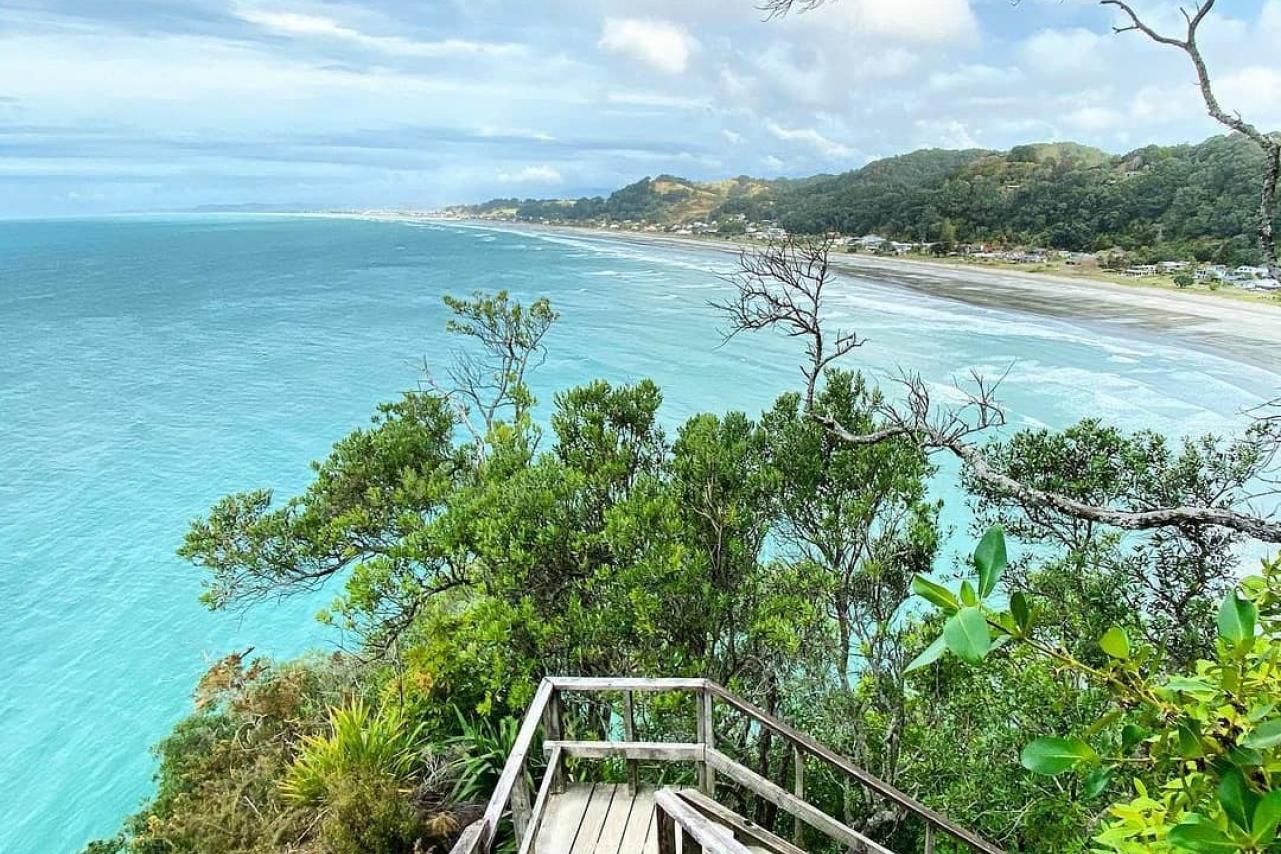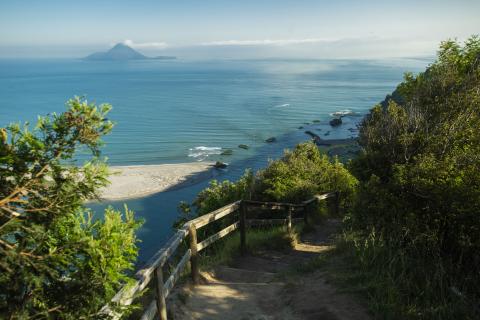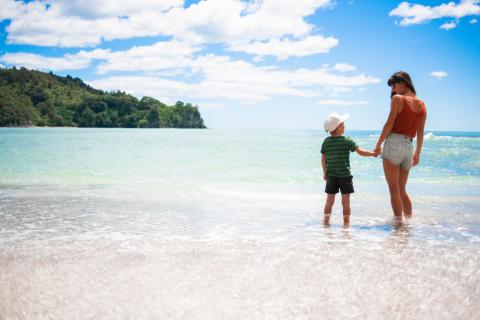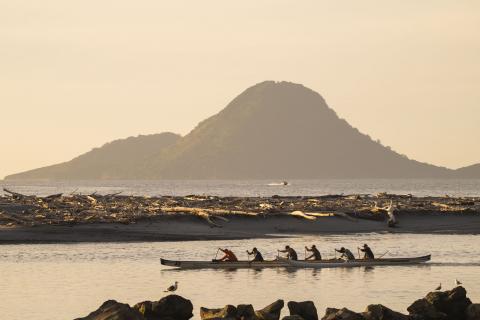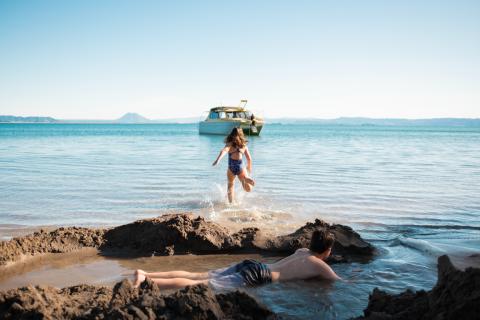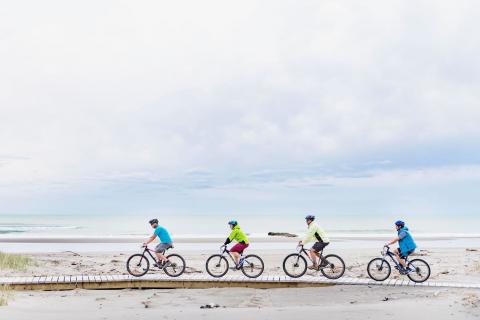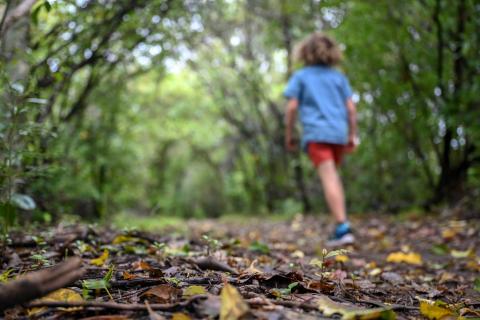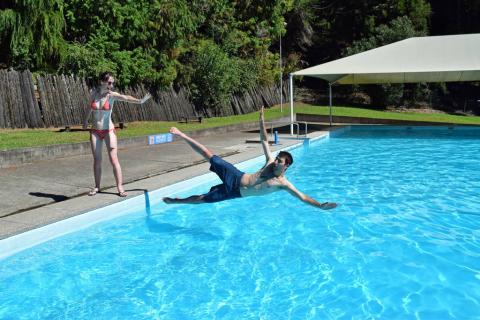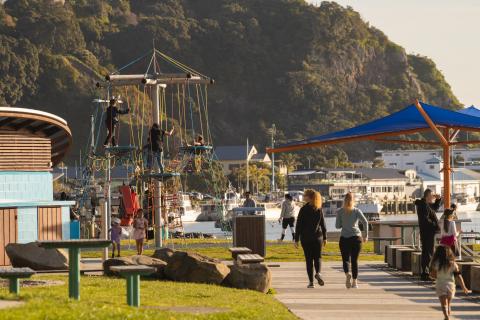Whakatāne: The best of the region's bush and beach escapes
Tim Roxborogh visited Whakatāne with his family - this is his story. Originally published in the NZ Herald.
Some people are beach people, some people are bush people, but if you're like me and you're a big chunk of both, it's hard to go past Ōhope. An 11km expanse of near-white sand in front of you, stunning native forest immediately behind, and a clutch of excellent cafes all in walking distance - this is my kind of place.

From where we were staying at the Beachpoint Apartments at Ōhope's West End, our balcony views took in Moutuhora (Whale Island) and Whakaari (White Island), while being framed by the forested cliffs that lead - via a dramatic coastal walk - to Otarawairere Bay. Only accessible by foot or kayak, this roughly 30-minute cliff-hugging assault is worth the perspiration for the private beach, enormous shells and rock pools that reward you out the other side. If you judge the tides right - or you've brought a paddle - you could continue on around the headland and make it to Whakatāne.
Navigating Whakatāne and Ōhope
There are just 6km separating the two towns of Whakatāne and Ōhope and together they form the Bay Of Plenty's third-largest urban area after Tauranga/Mount Maunganui and Rotorua. Although we're still only talking about 21,000 people, it's big enough to have plenty of shops and restaurants, bars and cafes, its own marina and its own airstrip. And yet still, the place is small enough that you'll never be fighting for space on the beach, or jostling for track on those bush walks.

Speaking of which, don't underestimate just how good the native forest is that provides an ever-present visual backdrop right throughout Whakatāne and Ōhope. In between beach visits with my wife and baby, we found ourselves crossing the road behind our apartment to explore the Ōhope Scenic Reserve. Home to one of the New Zealand's largest coastal pōhutukawa forests, summertime sees the reserve awash in the reds of the famed unofficial Christmas tree of Aotearoa.
The reserve has walks that comprise part of the Ngā Tapuwae o Toi trail - a 16km circuit that takes in historic Māori pa sites, ancient forests, wetlands and spectacular views. You can do the entire loop in a day if you're keen, or do what we did and knock off different sections at a time. Either way, you'll come away wondering how all you knew about Whakatāane was that it was sunny and had a nice beach.

That point got rammed home with a visit to Mataatua Wharenui, a Māori meeting house said to be as remarkable as any in the country. Near the Whakatane CBD, the intricately carved 24m long by 12.5m wide by 7.5m tall wharenui is big even by modern standards, but was colossal when built by Ngāti Awa in 1875.
The house that came home
Now known as "the house that came home", the history of the wharenui is almost too wild to be true. The short-ish version is that not long after the wharenui was completed, the Government ordered it disassembled and shipped to Sydney for an exhibition. Ngāti Awa felt they had little say in the matter and so in 1879, their precious, spiritually significant meeting house was taken apart like a modern-day Lego set, packed on to a ship and sent to a foreign land.
On arrival in Australia, nobody knew how to properly put the wharenui back together and so it was reassembled with the ancestral carvings on the outside, rather than facing in - a mistake, yes, but a whopping cultural insult too. From Sydney the wharenui was again taken down and put back together for a further exhibition in Melbourne, before another boat journey took the now battered panels and carvings all the way to London's V&A Museum.

Then for the next 40 years the wharenui was put into storage before making its next reassembled comeback at the British Empire Exhibition in Wembley in 1924/25. A decision was then made to finally return the wharenui to New Zealand to be showcased at Otago Museum. Want to display a traditional Māori meeting house indoors but your venue's too small? Just slice off the sacred carvings of former chiefs at the knees. So that's what they did. Unbelievable.

A warm welcome
For decades the wharenui was presented in this state to visitors at Otago Museum, before the house at last came home in 1996 to where it was always meant to be, Whakatāne. Then after more than 130 years of travels, trials and mistreatment, Mataatua Wharenui triumphantly reopened to the public in its original location in 2011 after a 15-year, multimillion-dollar refurbishment.
Tours of the wharenui - complete with pōwhiri, a brilliantly realised light display, kawakawa tea and the best kūmara brownies you never knew existed - are so frequently the unexpected highlight for visitors to Whakatāne/Ōhope and we were no exception.

Make the time for it because between those beach days and bush walks this striking building stands as much as a symbol of hospitality and community as it does for forgiveness and the righting of historic wrongs.
Tim Roxborogh hosts Newstalk ZB's Weekend Collective and blogs at RoxboroghReport.com
